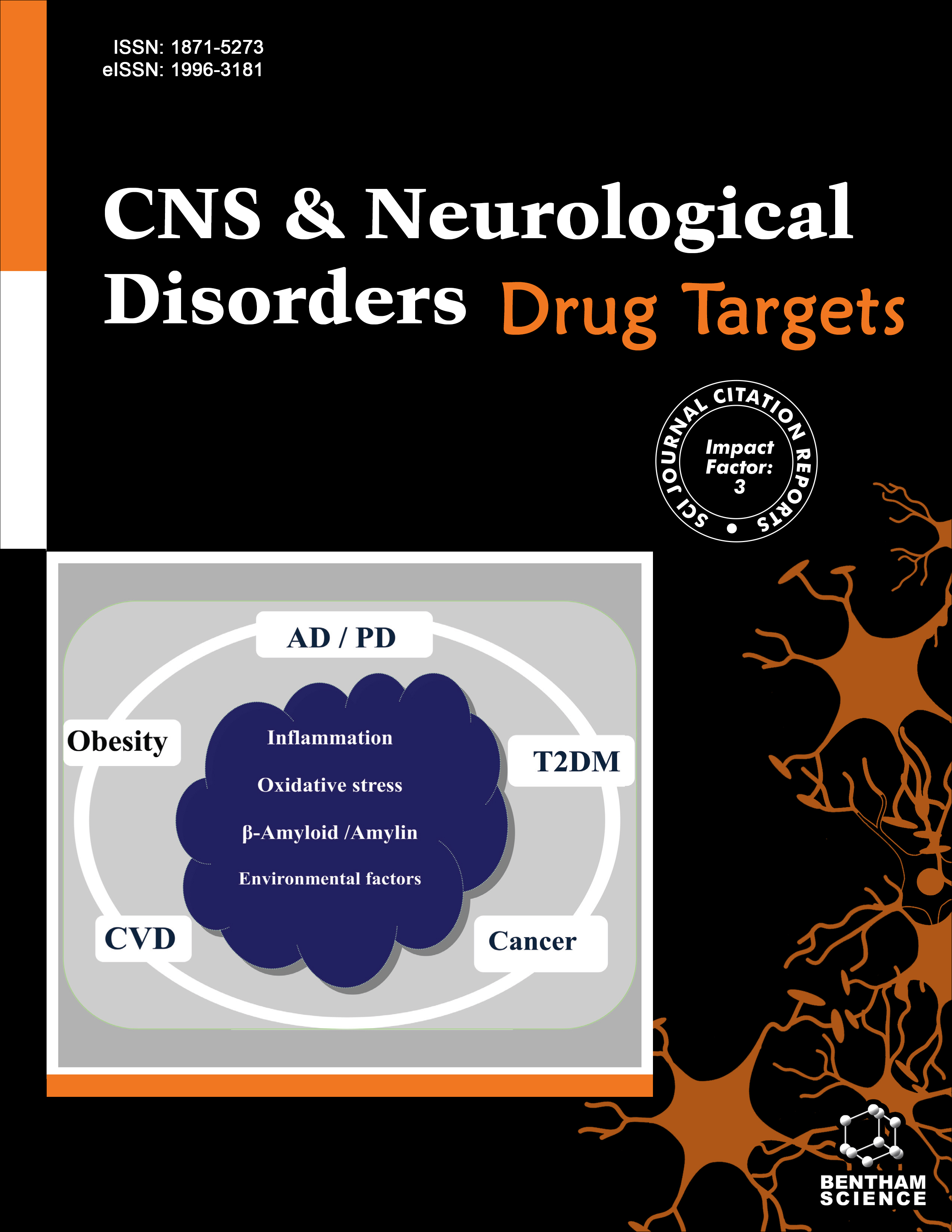- Home
- A-Z Publications
- CNS & Neurological Disorders - Drug Targets (Formerly Current Drug Targets - CNS & Neurological Disorders)
- Previous Issues
- Volume 13, Issue 6, 2014
CNS & Neurological Disorders - Drug Targets (Formerly Current Drug Targets - CNS & Neurological Disorders) - Volume 13, Issue 6, 2014
Volume 13, Issue 6, 2014
-
-
Bupropion in the Depression-Related Sexual Dysfunction: A Systematic Review
More LessDepression is the most prevalent psychiatric disorder (16.6%) and is frequently associated with impairments in several areas. Sexual dysfunction (SD) is a prevalent problem with rates ranging from 40-45% in adult women and 20- 30% in adult men. A relationship between depression and sexual dysfunction has been shown in the literature although the mechanisms of this association are not yet clear. Many antidepressants Read More
-
-
-
Differential Up-Regulation of Ammonia Detoxifying Enzymes in Cerebral Cortex, Cerebellum, Hippocampus, Striatum and Liver in Hyperammonemia
More LessIn order to gain insight into the ammonia-detoxification mechanisms in the brain and liver tissues, we have investigated the effects of hyperammonemia in rats, in vivo, on the activity levels of a number of ammonia- and glutamate-metabolizing enzymes in mitochondria and the cytosolic fractions of the cerebral cortex, cerebellum, hippocampus, striatum and liver. In general, the ammonia metabolizing enzymes Read More
-
-
-
The Role of Melatonin in Multiple Sclerosis, Huntington's Disease and Cerebral Ischemia
More LessAuthors: Begona M. Escribano, Ana L. Colin-Gonzalez, Abel Santamaria and Isaac TunezMelatonin is produced and released by the pineal gland in a circadian rhythm. This neurohormone has proven to be an antioxidant and anti-inflammatory molecule able to reduce or mitigate cell damage associated with oxidative stress and inflammation, and this phenomenon underlies neurodegenerative disorders. These facts have drawn attention to this indole, triggering interest in evaluating its changes and in its relat Read More
-
Volumes & issues
-
Volume 24 (2025)
-
Volume 23 (2024)
-
Volume 22 (2023)
-
Volume 21 (2022)
-
Volume 20 (2021)
-
Volume 19 (2020)
-
Volume 18 (2019)
-
Volume 17 (2018)
-
Volume 16 (2017)
-
Volume 15 (2016)
-
Volume 14 (2015)
-
Volume 13 (2014)
-
Volume 12 (2013)
-
Volume 11 (2012)
-
Volume 10 (2011)
-
Volume 9 (2010)
-
Volume 8 (2009)
-
Volume 7 (2008)
-
Volume 6 (2007)
-
Volume 5 (2006)
Most Read This Month
Article
content/journals/cnsnddt
Journal
10
5
false
en

Most Cited Most Cited RSS feed
-
-
A Retrospective, Multi-Center Cohort Study Evaluating the Severity- Related Effects of Cerebrolysin Treatment on Clinical Outcomes in Traumatic Brain Injury
Authors: Dafin F. Muresanu, Alexandru V. Ciurea, Radu M. Gorgan, Eva Gheorghita, Stefan I. Florian, Horatiu Stan, Alin Blaga, Nicolai Ianovici, Stefan M. Iencean, Dana Turliuc, Horia B. Davidescu, Cornel Mihalache, Felix M. Brehar, Anca . S. Mihaescu, Dinu C. Mardare, Aurelian Anghelescu, Carmen Chiparus, Magdalena Lapadat, Viorel Pruna, Dumitru Mohan, Constantin Costea, Daniel Costea, Claudiu Palade, Narcisa Bucur, Jesus Figueroa and Anton Alvarez
-
-
-
- More Less

